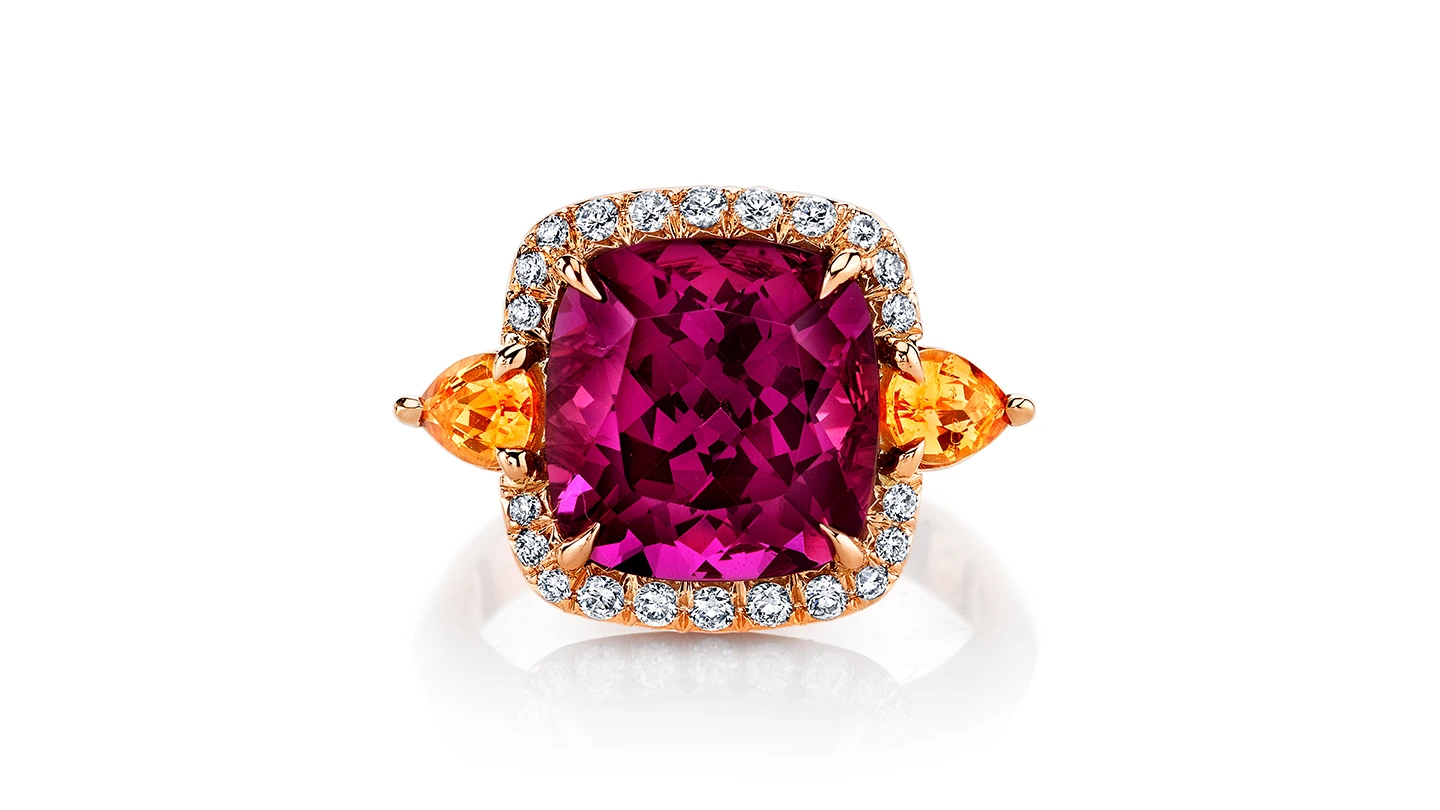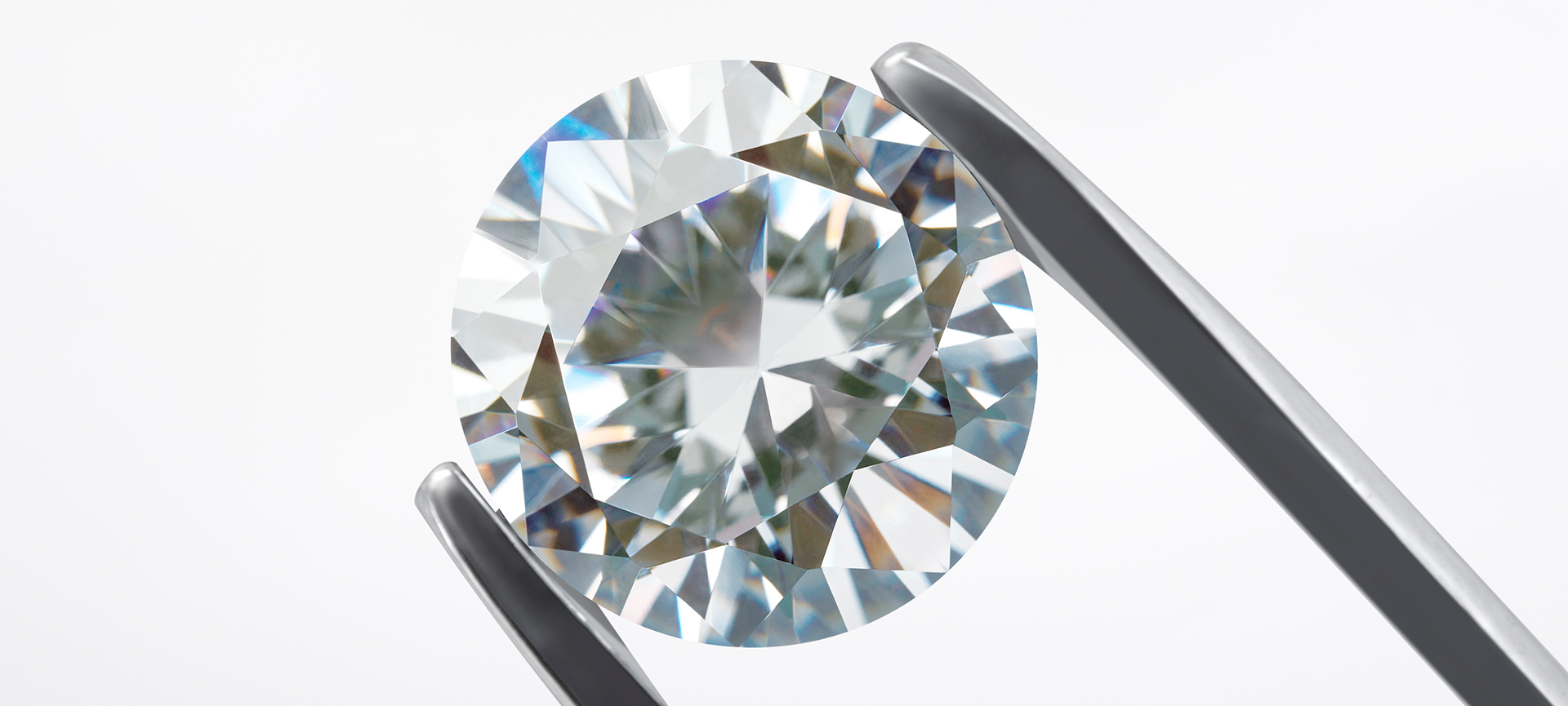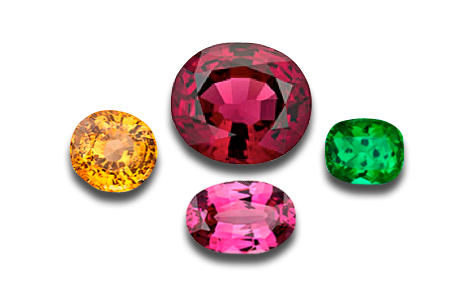Lucky you if yours is the January birthstone. A favorite gem of the Victorian era, garnet comes in a palette of beautiful colors. Read on to gain a deeper appreciation for the gem and the knowledge to shop more wisely.
In this post, we’ll cover:
Types of Garnets
Garnet History & Lore
Where Garnets Come From
Qualities to Look for in a Garnet
Garnet Care & Cleaning
January Birthstone: Types of Garnets
Garnet is a group of minerals that have the same crystal structure but slight differences in chemical composition. Five members of this group are commercially important as gems:
- Pyrope (purple to orangy red)
- Almandine (purple to orangy red)
- Spessartine (oranges and yellows)
- Grossularite (colorless to yellow, to reddish orange and orangy red, to vibrant green)
- Andradite (yellow and yellowish green)
There are also mixtures of these five species, creating even more colors. Variations in trace elements such as iron, manganese, chromium and vanadium produce the kaleidoscopic color range of garnets.

These are some of the many colors of garnet (top row, from left to right): 16.94 carat (ct) yellow garnet, 19.89 ct orange spessartine, 44.28 ct deep pink rhodolite, 16.99 ct reddish orange garnet, and 7.26 ct green tsavorite. Bottom row, left to right: 8.20 ct greenish yellow garnet, 12.36 ct golden yellow garnet, 9.22 ct pink garnet, 14.53 ct light green grossular, and 4.32 ct bluish green garnet. Photo: Robert Weldon/GIA
Gemologists love garnets for many reasons. For some, it’s the challenge of categorizing new garnet varieties. Others are fascinated by the characteristics of specific varieties. For example, demantoid garnets, the green variety of andradite, may display dramatic horsetail inclusions, which are one of the few internal clarity characteristics that can increase a gem’s value. Gemologists also love demantoid’s dispersion, which is so high that a well-cut gem displays an amazing amount of fire.
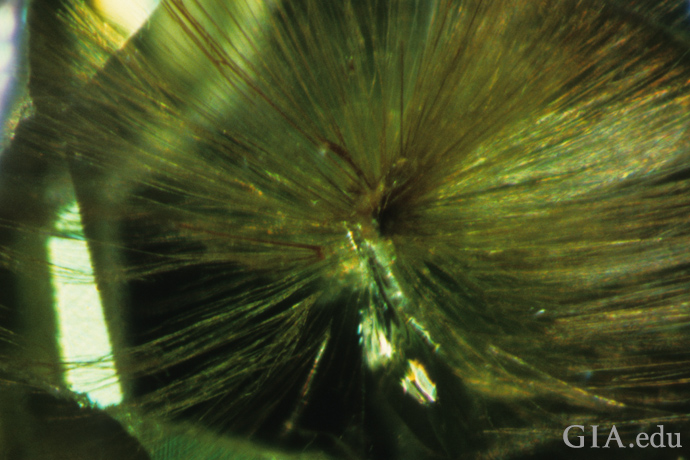
It’s obvious how horsetail inclusions got their name. Think of them as Mother Nature’s signature in this green demantoid. Photo: John I. Koivula/GIA
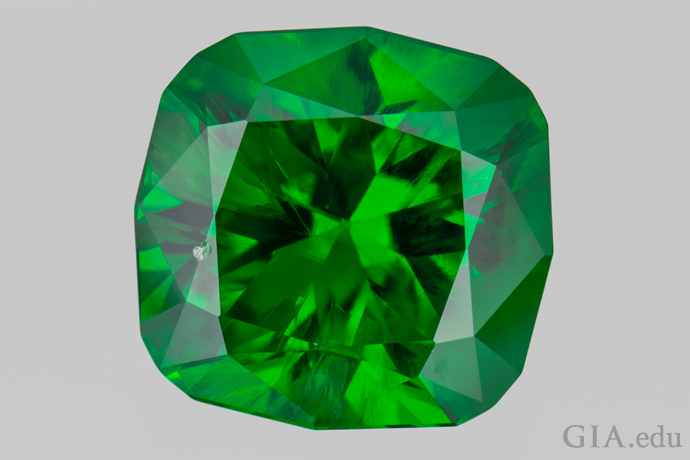
This 7.00 ct demantoid from Russia shows why some garnets are so coveted. Photo: Robert Weldon/GIA. Courtesy: Pala International
January Birthstone: Garnet History & Lore
Red garnets have a rich history. Necklaces studded with them adorned the pharaohs of ancient Egypt. Signet rings in ancient Rome featured garnet intaglios that were used to stamp the wax that secured important documents. The clergy and nobility of the Middle Ages had a preference for them.
The Smithsonian’s antique pyrope hair comb is one of the most famous pieces of garnet jewelry (pyrope is from the Greek pyrōpos, which means “fiery-eyed”). A large rose-cut garnet sits at the crest, much like a queen serenely surveying her court. The pyrope garnets that decorate this tiara-like jewel came from the historic mines in Bohemia (now part of the Czech Republic), and these rich red beauties were extremely popular during the Victorian era (1837-1901), when this piece was fashioned.

A crescendo of red, this antique pyrope hair comb would have made a breathtaking statement when worn. Courtesy: Chip Clark, Smithsonian Institution.
Curious about garnet’s reputed health benefits? Red gems like garnet were thought to be remedies for inflammatory diseases, and to soothe the angry heart. Garnet also was thought to cure diseases of the liver.
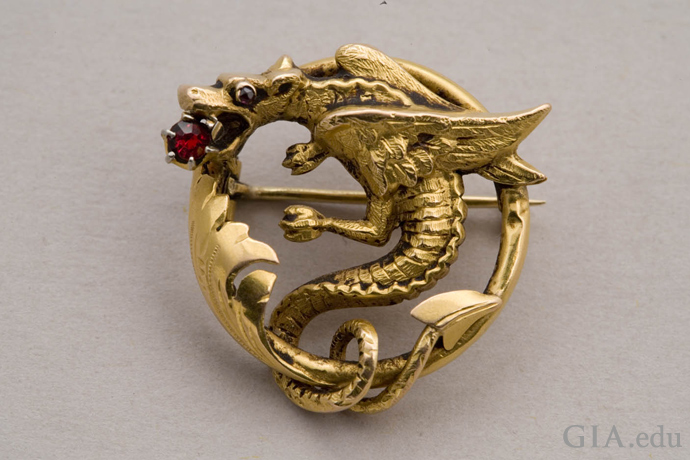
This fanciful 18K gold pin depicts a dragon or gryphon with a red garnet in its mouth. It was made during the Art Nouveau era (1890-1914). Photo: Eric Welch/GIA. Courtesy: Jana Miyahira-Smith.
January Birthstone: Where Garnets Come From
Russia and Bohemia were important sources of garnet in the 19th century, when they were prized by the Russian royal family and used by the great jeweler Peter Carl Fabergé (1846 – 1920). Tanzania and Namibia are important present-day sources for garnet. The gem is also found in Myanmar, Brazil, Kenya, Iran, Afghanistan, Pakistan, India and Sri Lanka, among other countries.

Namibia’s rolling hills are the scenic backdrop to the Green Dragon mine – an important modern source for demantoid garnet. Courtesy: Green Dragon Mine
January Birthstone: Qualities to Look for in a Garnet
Here are some helpful tips on selecting a beautiful garnet:
- Clarity: Garnet clarity depends on its type. The red garnets almandine, pyrope and rhodolite (a pyrope-almandine) typically do not have eye-visible inclusions. Some of the orange garnets, like spessartine and hessonite (a variety of grossularite), often have eye-visible inclusions. You can use this information to rule out particular gems. For example, you might not want to purchase red garnets that have eye-visible inclusions.
- Cut: Many garnets are cut into standard shapes and sizes for easy setting into jewelry. This is especially true of many red garnets. Expensive garnets like fine-quality tsavorite (a variety of grossularite) are cut into shapes and cutting styles that allow more of the weight to be retained from the rough.
- Demantoid is often cut to allow the best possible display of its fire. Garnets are also popular for designer cuts and carvings. Red garnets are classic materials for cutting into cabochons and beads. They are commonly found to have high clarity and to be very transparent.
- Carat Weight: Garnets can be found in all sizes and weights. Some garnets, like demantoid and tsavorite, are more commonly found as small crystals, so their value goes up significantly with size. Other garnets, like almandine, occur as larger crystals, so there’s no dramatic rise in value as size increases.
Most garnets are more affordable than diamonds, rubies, sapphires and emeralds. This means you should be able to get a larger gem for the same price.

A 6.22 ct spessartine flaunts its beauty in this necklace. Encircling the fiery orange garnet are some 0.40 ct of round diamonds set in platinum and 18K rose gold. Courtesy: Omi Privé
January Birthstone: Garnet Care & Cleaning
The different types of garnet range between 6.5 and 7.5 on the Mohs scale of hardness. This means that garnets are more susceptible to damage than rubies, sapphires and diamonds. So while not all garnets are good candidates far daily wear in a ring, they are ideal for earrings, brooches and pendants.
Give thought to where you store garnet jewelry in your jewelry case. If you let it rub against harder gems–again, think diamonds, rubies and sapphires–it can be scratched.
Garnets might rarely be treated by fracture filling, which is a method of concealing surface-reaching breaks in the gem by filling them with a glass-like substance. Their comparative affordability may be a reason why garnets are infrequently treated. Regardless, warm soapy water is always safe for cleaning garnets. Ultrasonic cleaners are usually safe, except for stones that have fractures or have been fracture-filled. Steam cleaning is not recommended.

This award-winning ring by Omi Privé may just take your breath away. It features a 5.55 ct oval tsavorite garnet, two fancy yellow diamonds weighing a total of 0.71 ct, and 136 round diamonds weighing 1.02 ct total weight, set in platinum. Courtesy: Omi Privé
Whether you’re shopping for the January birthstone, or a gem to celebrate your 2nd wedding anniversary, be sure to download our Garnet Buying Guide. It has the essential tips you need to find the perfect garnet. Take it with you, and shop with confidence.
